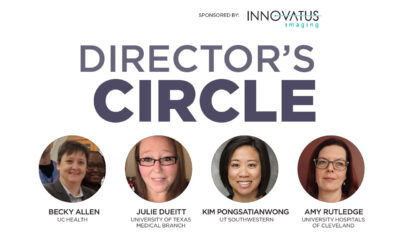
 In many workplaces, people get hired and instructed on their job responsibilities, they’ll get introduced to the rest of the team, and then POOF – they’re left to do their jobs. Goals are established, meetings are held, and if the magic workplace fairy waves her magic wand in the right way and at the right time, everything hums like a fine-tuned timepiece. Except it rarely works out so well.
In many workplaces, people get hired and instructed on their job responsibilities, they’ll get introduced to the rest of the team, and then POOF – they’re left to do their jobs. Goals are established, meetings are held, and if the magic workplace fairy waves her magic wand in the right way and at the right time, everything hums like a fine-tuned timepiece. Except it rarely works out so well.
If you question people about common workplace problems, you’ll probably hear at least one item from the following list:
- Interpersonal conflict
- Communication problems
- Gossip
- Bullying
- Harassment
- Low motivation
- Poor job fit
Why do I say this? Because these are topics I get calls about, and they happen in every industry. Sometimes I find myself reminding executives that workplaces are made up of people, and every person is unique. If they don’t treat employees like valuable assets, employees aren’t as engaged, and that lowers productivity. Also, if employees don’t feel valued – if supervisors don’t connect with them at a personal level from time to time, sometimes the employees leave.
You know how most heating and air conditioning experts say we should change our furnace filter every three months? Or, how auto mechanics say to change the oil in our cars every 5,000-10,000 miles? Or, how dentists say we should get our teeth cleaned every six months?
These are standard prescriptions to minimize the chances of our furnaces, cars and teeth having problems. From my experience, the workplace is no different.
So, if it were up to me to write a standard prescription for every workplace, it would be, “Train supervisors in how to recognize how each employee is unique, and have them conduct effective quarterly performance reviews to keep everyone aligned and focused.”
To accomplish that, I would also prescribe several assessment tools and triads.
Let me start with assessment. The tools I’d recommend include DISC behavioral style assessments, a cognitive style assessment such as the Myers-Briggs Type Indicator, and to assess motivational preferences I like the Driving Forces assessment.
By the way, I dislike calling these assessment “personality tests,” because first, personality is a huge concept and no one assessment tool can measure it. Second, the word “test” implies right and wrong answers, and with behavioral, cognitive, and motivational styles, no right or wrong exists. Styles can be effective or less effective in given situations, but not right or wrong.
This group of assessments provides each employee with clear awareness of their strengths and blind spots. The benefit? An opportunity for better self-management and work management. These assessments also provide supervisors with tremendous insights into how to manage individual employees and help each one feel valued.
Triads is the term I use for getting supervisors and managers to sit down and engage their employees one-on-one. The reason they’re called triads is an objective third party, one who understands the ins and outs of each assessment, facilitates a conversation between the supervisor and the employee. The role of such person is to create a safe environment so that people can open up and discuss communication and work preferences.
Why don’t more companies do this?
I believe the reason most companies don’t want to follow my prescription for creating the ideal workplace is they’re too busy driving forward for results. Their focus is on “production” and not “production capability.”
It’s like saying, “I don’t have time for changing oil or putting gas in my car, I have places to go and people to see.” Let me share a story based on a concept from the book, “7 Habits of Highly Effective People.”
Once upon a time, before the days of chainsaws, a strong young man got a job as a lumberjack. His boss handed him a large saw and showed him the area where he was supposed to work.
On his first day, the young man felled 18 trees, and his boss was thrilled.
The next day, the young woodcutter brought down only 15 trees, and the third day only 12. On the fourth day, the young man felled only 10 trees.
Thinking the young man might be taking too many breaks, the boss went out to observe him on the fifth day. But to his surprise, there was the young man, sawing away, sweat dripping profusely off his brow.
Noticing his boss, the young man said, “I must be losing my strength. I’m working just as hard as my first day, but I’m cutting down fewer trees. I don’t understand what’s going on.”
“When was the last time you sharpened your saw?” the boss asked.
“Sharpen my saw? I don’t have time for that. I need to be cutting down trees!”
What we’re talking about is finding an appropriate balance between production and production capability. Focus too much on production capability and you won’t get much production. But focus only on production, and after a while you won’t be capable of producing. It’s like neglecting maintenance on your car. Before long you won’t be driving anywhere.
The reason I prescribe assessments and triads for every workplace is because I’ve seen them work wonders every time they’re used. With this method, disengaged employees suddenly become engaged and problems in communication disappear.
Let me close by sharing a story of using assessments and triads in a Fortune 500 company. A certain vice president told me he couldn’t seem to get adequate productivity from one of his directors. The director was well-qualified, but as the vice president put it, “the gears weren’t meshing effectively.” My prescription? Assessments and a triad.
A few weeks after the triad I met again with the vice president. “Night and day difference,” he said. “We just needed to learn each other’s styles and how to communicate better within those styles.”
All this to say that if the magic workplace fairy hasn’t shown up and your workplace isn’t humming along as you’d like, it may be necessary to spend time on production capability.
Daniel Bobinski, M.Ed. is a best-selling author and a popular speaker at conferences and retreats. For more than 30 years he’s been working with teams and individuals (1:1 coaching) to help them achieve excellence. He was also teaching Emotional Intelligence since before it was a thing. Reach Daniel on his office phone, (208) 375-7606, or through his website, www.MyWorkplaceExcellence.com.








